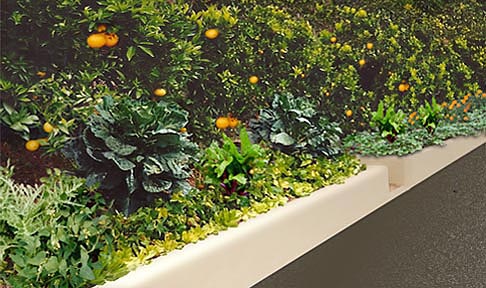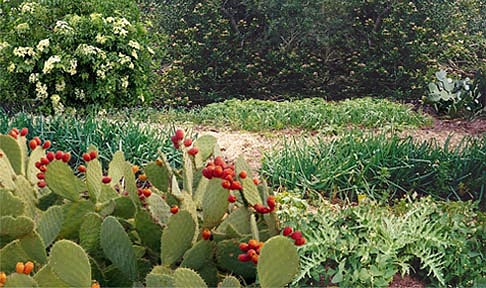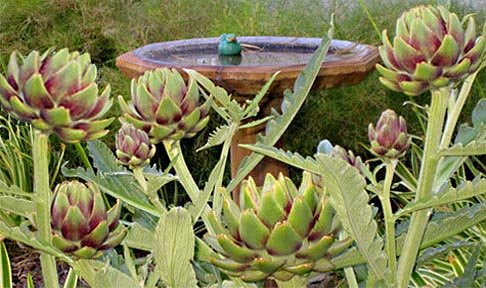 |
An Edible Landscape is the artful combination of food crops with ornamentals such as flowering perennials, herbs and shrubs to form a colorfully cohesive composition. An Edible Landscape is not a big vegetable garden. It's not just rows of raised wooden beds. Nor is Edible Landscape an experiment in Permaculture, which focuses on production but is not very pretty. Rather, an Edible Landscape is just as attractive as the familiar Mediterranean Style, though more creatively complex. As a residential landscape, it wraps around the home, providing both beauty and bounty. Fruit trees, veggies and berries are set among permanent plantings as complimentary companions. Since the plant palette is diverse, extra care must be given to combining plants that are culturally compatible, needing the same light, water and soil type. The concept of Edible Landscape originated in 1982 with Rosalind Creasy, who continues to create the finest examples. Rosalind stresses that good design always begins with the permanent features -- pathways, fences, decks and walls -- because they form a framework for the edibles which are constantly changing. The design must also provide easy access to all planters, tool sheds, work benches and compost piles. Growing your own food reduces the negative impact of agribusiness on the environment.
|
|

Raised beds of veggies and trees edge a driveway |

An edible area framed by CA native plants |
|

Birdbaths and ornaments are always at home in a garden
|
An Edible Landscape is the artful combination of food crops with ornamentals such as flowering perennials, herbs and shrubs to form a colorfully cohesive composition. An Edible Landscape is not a big vegetable garden. It's not just rows of raised wooden beds. Nor is Edible Landscape an experiment in Permaculture, which focuses on production but is not very pretty. Rather, an Edible Landscape is just as attractive as the familiar Mediterranean Style, though more creatively complex. As a residential landscape, it wraps around the home, providing both beauty and bounty. Fruit trees, veggies and berries are set among permanent plantings as complimentary companions. Since the plant palette is diverse, extra care must be given to combining plants that are culturally compatible, needing the same light, water and soil type. The concept of Edible Landscape originated in 1982 with Rosalind Creasy, who continues to create the finest examples. Rosalind stresses that good design always begins with the permanent features -- pathways, fences, decks and walls -- because they form a framework for the edibles which are constantly changing. The design must also provide easy access to all planters, tool sheds, work benches and compost piles. Growing your own food reduces the negative impact of agribusiness on the environment.

Raised beds of veggies and trees edge a driveway

An edible area framed by CA native plants

Birdbaths and ornaments are always at home in a garden
|
 |
 |